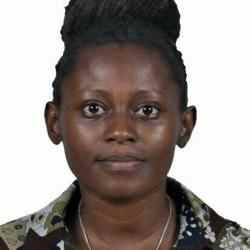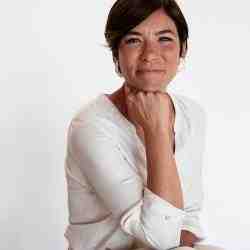Introdução
Tasso is tackling deforestation and climate change in tropical forest regions by creating a new architecture for sustainable forest management and by spearheading open data, multi-actor platforms that are essential in making the transition to a low carbon economy. An expert convener and mobilizer, Tasso fluidly engages the full spectrum of stakeholders in society, setting a vision, creating new roles, and redefining dynamics, and supporting and empowering each actor to play a part in environmental protection.
A nova ideia
For almost three decades, Tasso has dedicated himself to addressing deforestation and climate change through a new infrastructure for sustainability. By facilitating the flow of information and resources, Tasso has been able to build relationships between civil society, the government, and the private sector and engage them as champions for the environment. He is seen as one of the major environmental architects in Brazil, who has shaped and co-led the environmental agenda and established mutually reinforcing institutions, policies, and systems that have greatly contributed to reducing forest loss to historically low levels.
In the 1990s, Tasso devoted the first decade of his career to creating sustainable production chains that could serve as the foundation for a new economic model in the Amazon. He initially focused on mainstreaming the certification of forest and agricultural products through his work at Imaflora, which he co-founded in 1995. There, he developed the systems and mechanisms for certification, but also and more importantly he changed the mindset of stakeholders at a time when there was great distrust between the private sector and civil society, and when the private sector was playing an extremely limited role in society.
In the early 2000s, Tasso was able to accelerate his impact when he joined the Ministry of Environment. There, he designed and passed a bill for designating and regulating public lands to avert illegal logging. The bill instituted a concessionary system that ties permits for extracting forest resources to compliance with socio-environmental standards. He then envisioned and created the Brazilian Forest Service, spearheaded the National Plan to Combat Deforestation in the Amazon, and envisioned and led the development of the Amazon Fund, currently the world's largest forest protection fund. These innovations provided a framework to reduce the environmental impact of global supply chains that are intrinsically tied to the Amazon, such as beef and timber.
In the early 2010s, Tasso left the government to create and lead two open data, multi-actor initiatives that are essential to transition to a low carbon economy that are one of a kind in the world: the Greenhouse Gas Emission and Removal Estimating System (SEEG) and the Brazilian Annual Land Use and Land Cover Mapping Project (MapBiomas). Both initiatives use groundbreaking technologies and methods to produce more accurate, detailed, and updated country-level data to influence effective environmental policy and to ensure better-informed decision-making, planning, and implementation of solutions. These initiatives not only ensure that actors across society have timely and accurate data, but also provide proposals and strategies to both public and private actors on effective actions that they can take. Tasso has replicated both the SEEG and MapBiomas across South America as well as India and Indonesia by assembling grassroots coalitions that implement them independently.
O problema
Brazil is the second most forested country in the world, with more than half a billion hectares of forest. Alongside its ecological value, Brazil’s forest is essential to the country’s economy and food security. It produces 70% of Brazil’s rain, which supports agriculture and the main source of energy, hydroelectric power. The Amazon alone releases 20biu tons of water into the atmosphere each day. Yet the country also has one of the highest rates of deforestation globally, driven by the production of commodities such as timber, soy, beef, and palm oil.
In the early 2000s, Brazil faced historically high levels of deforestation. Weak governance coupled with corruption hindered the adoption of good forest management practices in public lands, which comprise 75% of the Brazilian Amazon. This encouraged the growth of illegal logging and land grabs. Lack of functional mechanisms to generate strategic, transparent data complicated monitoring and evaluation efforts and resulted in weak, ineffective policies. On the other hand, conservation approaches at the time failed to reconcile the economic value of the forest and overlooked communities’ needs. Tackling deforestation therefore required a management system that integrated conservation and production, generating market-based incentives that promoted sustainable practices.
At the same time, forests are increasingly threatened by climate change. Rising temperatures have led to more frequent and severe droughts in the Amazon, which in turn exacerbate the forest’s vulnerability to fire. Climate change is also creating new challenges such as intense flooding and increasing the spread of invasive species and biodiversity loss that destabilize forest ecosystems.
A estratégia
Tasso has built an architecture of interconnected systems to promote a sustainable economy by fostering engagement and enabling effective decision making by stakeholders at all levels—from small-scale farmers and civil society to global companies and governments. He has progressively increased the scope and ambition of his initiatives to address new dimensions: starting with envisioning a new system for certifying rainforest products, he then established a legal and institutional framework for sustainable forest management across Brazil, before moving on to scaling open data systems for informing environmental actions and monitoring progress globally.
In the 1990s, as the director of Imaflora, Tasso focused on mainstreaming certification by democratizing its use and building the market for it, while at the same time assembling a team that positioned Imaflora as the main forest and agricultural products certification body in Brazil. Certification became a tool to enable and regulate the economic use of public land without jeopardizing the environment, while simultaneously strengthening the communities that inhabited the region. It functioned as a guarantee system which improved the traceability of value chains and helped consumers to identify and support responsible products. To ensure that the model was responsive to real social needs, Tasso pioneered a participatory process that involved local communities in setting certification standards and conducting assessments. Additionally, to change practices at all levels of the system, Tasso established the Social Certification Fund to certify small-scale operations, the first program of its kind in the world.
Under Tasso’s leadership, Imaflora became the main environmental certification institution in Brazil. Besides building an organization that today continues to be a major reference in the country and globally, Tasso developed a holistic vision and strategy for the broader field and created new relations between the government, private sector, civil society organizations, and local communities. Tasso recognized that certification alone was not enough to achieve Imaflora’s vision. It was necessary to build capacity for sustainable forest management with both big companies and local communities, to generate the market for certified products, to engage with the agricultural sector, and to influence public and business decision-makers. He developed complementary programs that would change practices in all the systems involved and implemented them through strategic, multisector partnerships, surfacing, engaging, supporting, and connecting leaders across different sectors. To date, the organization works in 68.5 million hectares throughout Brazil; reached 66.9 thousand people through its various programs, including rural and forestry workers and local communities; and worked directly with 1,258 businesses and producers in the farming and forestry sectors.
Subsequently, Tasso sought to build the architecture for sustainable forest management at a country level, with the government at the helm. Tasso moved to strengthen policies and the government’s capacity to enforce them as a director of Brazil’s National Forestry Program in 2003. He created a massive initiative to tackle the trade in illegal mahogany, then a symbol of illegal logging in Brazil. The operation seized illegal wood and auctioned it to raise funds for community projects in the Amazon, which effectively collapsed the market. To further avert illegal logging in public lands, Tasso developed a framework for designating and regulating their use. He designed and passed a bill in record time that instituted a concessionary system that requires parties to meet socio-environmental standards in order to obtain contracts or subsidies to extract forest resources. To enable and ensure implementation, he created the Brazilian Forest Service and brought stakeholders together to facilitate enforcement and strengthen tracking mechanisms. He also spearheaded the development of the National Plan to Combat Deforestation in the Amazon and partnered with the national space research institute to track deforestation in real time to quickly identify and respond to illegal logging through a network of public agencies, citizen sector organizations, and businesses. The Plan helped to reduce deforestation by 75% between 2004-2010, by far the most significant decline in forest loss and CO2 emissions in the world.
Establishing a new economic model for the Amazon required mobilizing new sources of funds to support ambitious initiatives. In 2007, Tasso invented the Amazon Fund as a more efficient financing mechanism to attract international investments by making funding conditional on results. Eliminating risk created large-scale incentives for investors, which also changed the government’s view of the Amazon’s strategic significance. Tasso led international negotiations for the Fund, the biggest international fund for forest protection worldwide (US $2bn) and created a multi-stakeholder governance model to ensure transparency.
Seeing the connection between deforestation and climate change, Tasso realized that the next step was embedding forest protection efforts in a comprehensive strategy to avert the climate crisis. As a result, over the past decade and a half, Tasso has worked to guide decision-making and measure progress on action against climate change across sectors. He started by engaging and raising awareness among stakeholders inside the government (including the President) and in all types of industries to set a national target for reducing emissions. By 2009, the target was written into law through the National Climate Change Policy, making Brazil the first developing country to set national targets and write them into law.
Tasso is now focusing on strengthening Brazil’s capacity to transition to a low carbon economy. Central to this effort is using groundbreaking technologies to develop tools that the government and the business community can use to make bold environmental commitments and that civil society can use to bolster advocacy efforts. To do this, he created and currently leads two collaborative projects: (1) the Greenhouse Gas Emission and Removal Estimating System (SEEG), which was launched in 2013, and (2) the Brazilian Annual Land Use and Land Cover Mapping Project (MapBiomas), which started in 2015.
SEEG represents the largest platform globally to calculate annual greenhouse emissions throughout the economy. It uses a methodology originally designed by Tasso, based on the National Inventory of GHG, that turned into a system under the umbrella of the Climate Observatory, a network of 50+ organizations working on climate change in Brazil. SEEG tracks 600 sources of emissions at state and country levels since the 1970s for all sectors of the economy. By providing an annual alternative to the official 5-year data releases, SEEG became a fundamental transparency instrument for ensuring compliance and measuring progress against the National Policy on Climate Change, for advocating the government to set more ambitious targets, and for spotting trends and possible deviations in time to correct or adapt policies.
SEEG has also recently launched a new system that allows Brazil’s 5500 municipalities to review their emissions from 2010 at zero expense, freeing up time and resources for local authorities to focus on taking high-impact actions to reduce them. To translate this data into policies, Tasso and his team create an annual report that includes an analysis of progress and gaps in reducing emissions, proposals for national commitments, and specific strategies to achieve them. By demonstrating a clear and feasible path, these reports have become a key advocacy tool to push authorities to be more ambitious.
SEEG is available on a website where people can easily navigate and search the database, including how each source is linked to specific economic activities. It is currently the most comprehensive and updated spatial database of emissions available in the world. The next phase of SEEG is to create a public tool that can be easily navigated, where people can find concrete solution proposals attached to each of the emission sources. These proposals would include an action plan, case studies, and possible funding sources.
In 2015, Tasso led the creation of another initiative called MapBiomas which is dedicated to mapping and monitoring all land cover and land use transformations in Brazil in unprecedented resolution. A network of 20 partners including Google, NGOs, universities, and tech startups were able to generate the most complete, updated, and detailed time series of annual land cover and land use data in any country in the world, made available in a free, transparent, and accessible manner to the general public. One of the key uses for the data is monitoring deforestation: MapBiomas tracks deforestation, degradation, and recovery of native vegetation, producing thousands of reports every week. These reports help hold governments, industries, and landowners accountable; curb illegal deforestation through an alert system; and provide greater security to entities that do not want to finance activities linked to deforestation. For example, Tasso works with banks so that they leverage this data to carry due diligence of the local companies they invest in and to ensure their investments do not fund local companies engaged in deforestation.
SEEG and MapBiomas together provide rich open-source data that is empowering civil society to inform their own actions and hold government and businesses accountable. Generating more detailed data in a format that is easy to understand also supports policy formulation and enforcement by improving monitoring and responsiveness. Like Tasso’s previous work, these initiatives involve an interdisciplinary, cross-sector network of experts, organizations, and institutions at local and international levels. He continues to build and strengthen these partnerships and has been replicating the initiatives in other countries. SEEG has been replicated in Peru and India, while in 5 years the MapBiomas network has grown across the Pan-Amazon and Gran Chaco regions, as well as Uruguay and Indonesia. To scale up, Tasso has focused on building and training coalitions of grassroots organizations, in order to equip local experts to use available technologies to produce their own, contextually relevant data independently.
A pessoa
Tasso’s love of forests was born on a road trip to Paraná in the late 1980s when his father, an electrical engineer, took a detour to visit a pulp plant he was building. At a time when the burning Amazon and the assassination of Chico Mendes were making headlines, witnessing that forests could be simultaneously productive and preserved was a revelation. This fascination led Tasso to study forest engineering at the University of São Paulo.
While at university, he quickly displayed the extraordinary ability to convene people around a shared vision that would define his career. After a transformative experience at the first symposium of the International Forestry Students’ Association, Tasso was determined to provide his peers with the same opportunity to broaden their minds. Since most students lacked the funds to travel, he mobilized them to host the next symposium in Brazil. Tasso put together teams to plan, coordinate, and fundraise, culminating in an event that brought together 140 students from 90 countries. Tasso also holds the record of the highest number of internships (20+) that a student has ever taken at the university, reflecting his insatiable thirst for learning and his holistic mindset.
In 1993, Tasso teamed up with his professor Virgílio Viana to lead the process of creation and consultation for the newly created Forest Stewardship Council (FSC) in Brazil. The project sought to provide an alternative by creating global standards for forest management that encompassed social, environmental, and economic criteria. However, Tasso realized that certifiers tended to be American and European and focused on products from the tropics. He and Virgilio believed that certification had to be truly global, so, two days after his graduation, they launched Imaflora with the vision of redistributing knowledge and expertise.
Tasso strongly believes that everyone is accountable for social and environmental well-being. His strategy is to strengthen people, organizations, and institutions’ capacity to take action. He always starts at a personal level, building trust and excitement and promoting ambitious thinking to encourage people to get involved. At the same time, the FSC process taught Tasso the importance of achieving consensus before moving ahead with an idea. That is why, once he has identified all the actors that have to be brought together, he then brokers connections, facilitates dialogue, and aligns incentives to enable collaboration. By empowering others to co-lead solutions from day one, Tasso has built initiatives and systems that endure and flourish without him. Indeed, whenever he starts a new initiative, it is his personal goal to design them in such a way that they will endure the test of time.




